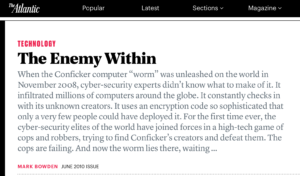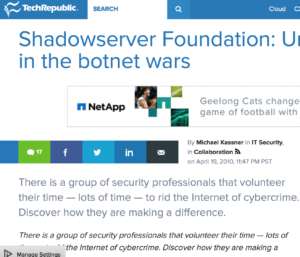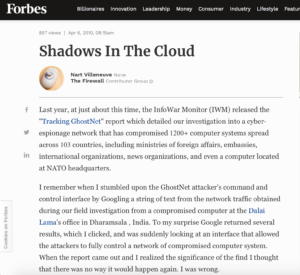The Atlantic, June 15, 2010
When the Conficker computer “worm” was unleashed on the world in November 2008, cyber-security experts didn’t know what to make of it. It infiltrated millions of computers around the globe. It constantly checks in with its unknown creators. It uses an encryption code so sophisticated that only a very few people could have deployed it. For the first time ever, the cyber-security elites of the world have joined forces in a high-tech game of cops and robbers, trying to find Conficker’s creators and defeat them. The cops are failing. And now the worm lies there, waiting …











